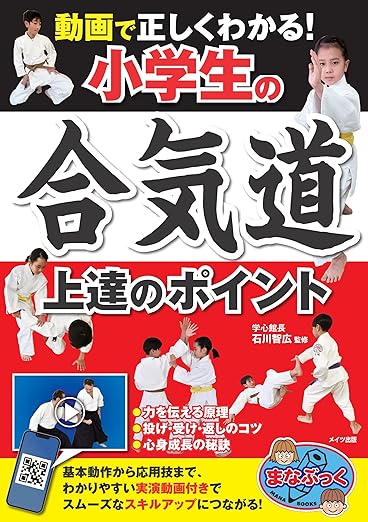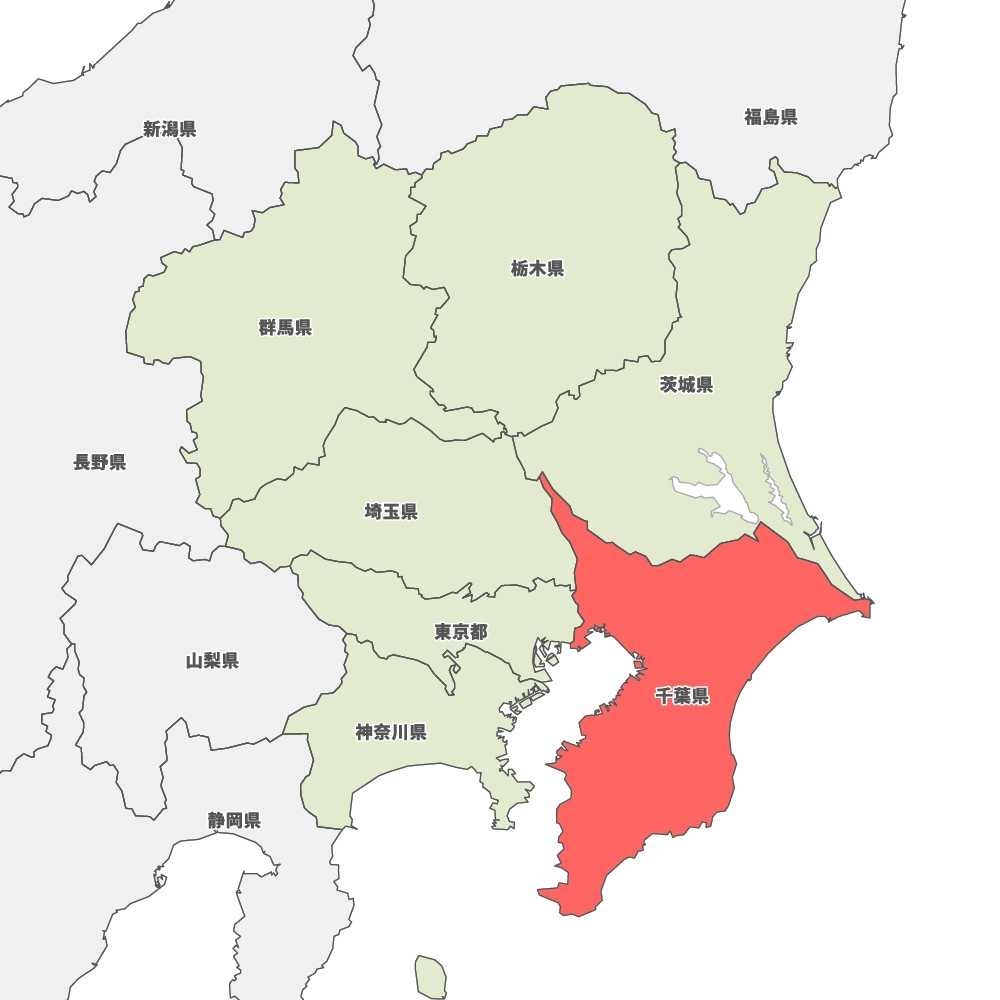Welcome to Rakushinkan
For those seeking real Aiki and authentic Japanese martial arts
Founded on May 5, 1993, Rakushinkan is a traditional dojo that teaches true Aiki, deeply rooted in classical Japanese martial arts.
Unlike many modern Aikido schools where techniques work only through cooperation, our techniques remain effective even when the opponent resists fully and sincerely.
We do not perform choreography. We do not train to “look good.”
We train to move—even when held.
▶ What Makes Rakushinkan Different?
policy
1. Techniques That Work — Even With Resistance
In many modern Aikido dojos, techniques rely on the uke (partner) moving in cooperation.
At Rakushinkan, we believe:
“If a technique only works when the partner allows it, it is not Aiki.”
Our training starts from being firmly grabbed or held, then explores how to move naturally and fluidly—without force, without tension.
This is Aiki that works in reality, not just in demonstrations.
2. Integrated System: Taijutsu × Kenjutsu × Iaijutsu
Rakushinkan combines the principles of several koryu (classical martial traditions):
Daito-ryu Aiki Jujutsu
Asayama Ichiden-ryu Iaijutsu
Ono-ha Itto-ryu Kenjutsu
Mugen Shinto-ryu Iaijutsu
Through these arts, we practice what we call “ken-yawara ittai”—the unity of sword and empty-hand techniques.
We believe that one cannot fully understand body arts without learning the sword.
All students, regardless of background, are encouraged to study both kenjutsu and taijutsu, as they are inseparable in our approach.
3. No Competition. No Comparison. Just Growth.
There are no tournaments here.
We do not teach to win. We teach to refine—body, mind, and spirit.
Through repetition, breath, and sincere contact, students naturally cultivate:
Calmness under pressure
Sensitivity to movement
Centeredness and stability
Respect and humility
A presence that no one wants to attack
The goal is not to fight.
The goal is to become someone who cannot be attacked.
Our Services
▶ Not for Tourists. For True Learners.
We respectfully do not accept short-term visitors or casual travelers.
Aikido is not a tourist experience. It is a path.
We welcome those who can commit at least 3 to 6 months to regular training, who seek to deepen themselves through sincere and consistent study.
And especially, we invite those who dream of bringing Rakushinkan’s spirit to their own country.
If you aspire to establish a branch dojo abroad, we will support your long-term journey.
This is not a place for “looking strong.”
It is a place for becoming truly unshakable.
Our Services
▶ Beyond Demonstrations: Returning to the Essence of Budo
In recent decades, many Aikido demonstrations have become performance-oriented.
Techniques are pre-arranged, movements are scripted, and beauty is prioritized over function.
Rakushinkan returns to the origin of Budo—to the reality of uncertain contact, where techniques arise naturally through correct use of the body, not through expectation.
We do not move to impress.
We move because we are free—even when held.
Our Services
▶ Who We Welcome
We invite individuals who:
Can commit at least 3 to 6 months of regular training in Japan
Seek a real understanding of Aiki, beyond choreography
Wish to study kenjutsu and iaijutsu alongside taijutsu
May already have Aikido experience but feel something is missing
Are considering the establishment of a Rakushinkan branch abroad
We have dojos in Tokyo, Chiba, and Ibaraki, and several international students already train with us regularly.
While we are not fluent in English, we communicate sincerely—and that is what matters most in Budo.
Support in English is available when needed.
Our Services
▶ Start Your Journey
If you feel that modern Aikido has drifted too far from its origins…
If you seek a place to test and refine your understanding of true Aiki…
If you feel that Budo is not about looking good, but about being real—
Then Rakushinkan may be the path you’ve been looking for.
Contact us in English or Japanese.
We look forward to training with you.
Participant comments

In this class I learn that by continuous practice I can get better. I am very happy that all students and teachers explain until I understand correctly. I also concentrate my mind better and improve my posture. とてもおもしろい
Olga Lineth(Mexico) (google map Headquarters DojoHeadquarters Dojo)
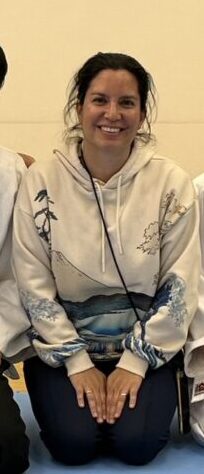
De Aikido lessen in dit Dojo zijn heel goed, de leraar geeft heldere instructie, is geduldig en kan goed met kinderen/ jongeren omgaan. De groep is klein, dus er is veel individuele aandacht. Een absolute aanrader voor sport en zelfverdediging.
Ana Kristin Strategier(Netherlands)(google map Headquarters Narita Dojo)
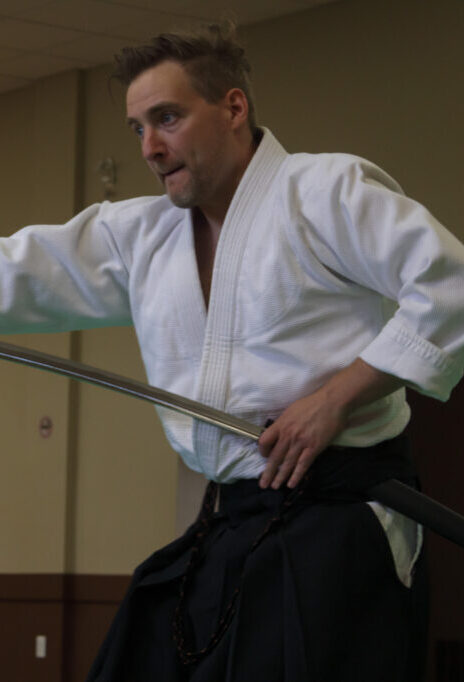
Rakushinkan is an excellent place to learn traditional Japanese martial arts. Ishikawa Sensei’s curriculum includes Aikido and older jujutsu and sword which are complementary. Of course, Ishikawa’s skill is very high. He is also funny. Classes are very enjoyable. The members are all very good people and very dedicated. I highly recommend Rakushinkan for learning true Japanese martial arts to everyone.
Josh MacDonald(Canada)(google map Headquarters DojoHeadquarters Dojo)

石川先生から「力入ってるね。会社でもそうなんでしょ」と冗談半分によくからかわれます。仕事中にこの言葉を思い起こし、合気道で得たものが仕事に置き換えると、実行場面で応用できる」と思うことが多々あります。(例えば...)
会社員 岡田様
Trustindex は、レビューの元のソースが Google であることを確認します。 年齢に関係なく稽古が出来ます。60過ぎて始めて疲れますが体を動かす事で生活にメリハリがつきます。 仕事を辞めてからの体力養成にとても役立っています。 体験を申し込む事は迷いますが、一度経験してみて下さい。Trustindex は、レビューの元のソースが Google であることを確認します。 自分の身は自分で守れるようにとの思いで、子供が5歳の時から習い始めました。 少し弱氣な我が子でしたが、合氣道をはじめた事で自分に自信がついたようで、お友達との関わり方も良い方向へ変わった氣がします。 先生達は優しく、時に厳しく指導してくださり、毎回たくさん吸収して帰ってきます。 習わせて本当に良かったなと感じます。 今後もよろしくお願いします。Trustindex は、レビューの元のソースが Google であることを確認します。 木曜日いつも夜時間の参加ですが本日スポット的に14時からの稽古に参加させて頂きました。 初めてお会いする人たちとの稽古は新鮮で自身への氣づきもありました。 また機会ありましたら この時間帯にも参加したいと思います。 ありがとうございました。Trustindex は、レビューの元のソースが Google であることを確認します。 人生における様々な重要なことを稽古を通じて学べる道場です。合氣道を通して生き方を学びたい方におすすめです。Trustindex は、レビューの元のソースが Google であることを確認します。 In this class I learn that by continuous practice I can get better. I am very happy that all students and teachers explain until I understand correctly. I also concentrate my mind better and improve my posture. とてもおもしろいTrustindex は、レビューの元のソースが Google であることを確認します。 楽心館は稽古時間が昼間からやっているので、無理なく稽古できて、とても便利ですね!Trustindex は、レビューの元のソースが Google であることを確認します。 Rakushinkan is an excellent place to learn traditional Japanese martial arts. Ishikawa Sensei’s curriculum includes Aikido and older jujutsu and sword which are complementary. Of course, Ishikawa’s skill is very high. He is also funny. Classes are very enjoyable. The members are all very good people and very dedicated. I highly recommend Rakushinkan for learning true Japanese martial arts to everyone.Trustindex は、レビューの元のソースが Google であることを確認します。 二年前に合氣道を始めました。石川先生が優しくて、かつ分かりやすく教えて下さいます。とても親しみやすい雰囲氣の中で稽古をしながら、先生方や仲間とも仲良くなれる所が氣に入っています。Yuna (小学生) 新しい技が出来ると嬉しくて、しっかり覚えたいもっとやりたい、という氣持ちになり楽しく稽古しています。先生も優しくて、教え方もとても分かりやすくて、うまく出来ない時はやり方を見せながら何度も教えてくれます。先生も優しく色々な技もあるので、ぜひやってみてください!Sayuri (小学生)
Questions about Aikido and martial arts
Have you ever watched a video of a demonstration and wondered, “Is that really how it works?” In fact, I often see videos of people showing more respect for the sensei than necessary and simply taking a flying ukemi. Of course, there are things to be learned from such training, but at Rakushinkan we don’t think it can be called true Aiki.
At Rakushinkan, we practice in which techniques actually work from a firmly held position, so you can experience that techniques are not pre-established.
There are cases where a clean ukemi has become the standard for evaluating whether an Aikido technique has been applied. However, this takes you away from acquiring practical skills. It does not necessarily lead directly to practical self-defense.
At Rakushinkan, we do not practice “tobi ukemi” or “jump ukemi,” which are often referred to in Aikido.
“Let’s suppose someone hits you” – there is an episode for each technique. It is an imitation, and we do not actually hit the other person with the intention of seriously injuring them. We practice in a kata style, and there are no matches.
However, since it is a martial art, there is pain, and injuries can occur, but since we are both focused, no serious injuries occur. We ask that you sign up for sports insurance when you join.
We train in a way that suits each person. If they can’t do sitting techniques, we’ll practice standing techniques, and for older people, we may end the lesson early. We hope that they will train in a way that suits them and use what they’ve learned in their daily lives.
This is because the aim is not to destroy the opponent in the first place. If your aim is to “defeat the opponent”, it would be more effective to learn another martial art.
Aikido aims to train the use of the body, known as “aiki”, and to help each other grow. Also, if you focus on competing in matches, you will lose sight of the original aim of martial arts, which is the pursuit of inner strength, character development to become not someone who does not lose in fights but someone who does not start fights in the first place, and the importance of applying it to everyday life.
Adult training is 1.5 hours, and children’s training is 1 hour. Adult training includes 30 minutes of swordsmanship practice. This is in accordance with the adage “Kenjuu Ittai” (the sword and the softness are one), and is to apply the principles of swordsmanship to taijutsu. Specifically, the first 30 minutes are spent on basic training and sitting techniques, and the next 30 minutes are spent on basic standing techniques.
Prices for Culture/Ibaraki Branch are different, so please refer to each dojo's page.
About the cost

2週に1回
Practice once every two weeks
- adult ¥4000
- child ¥3000
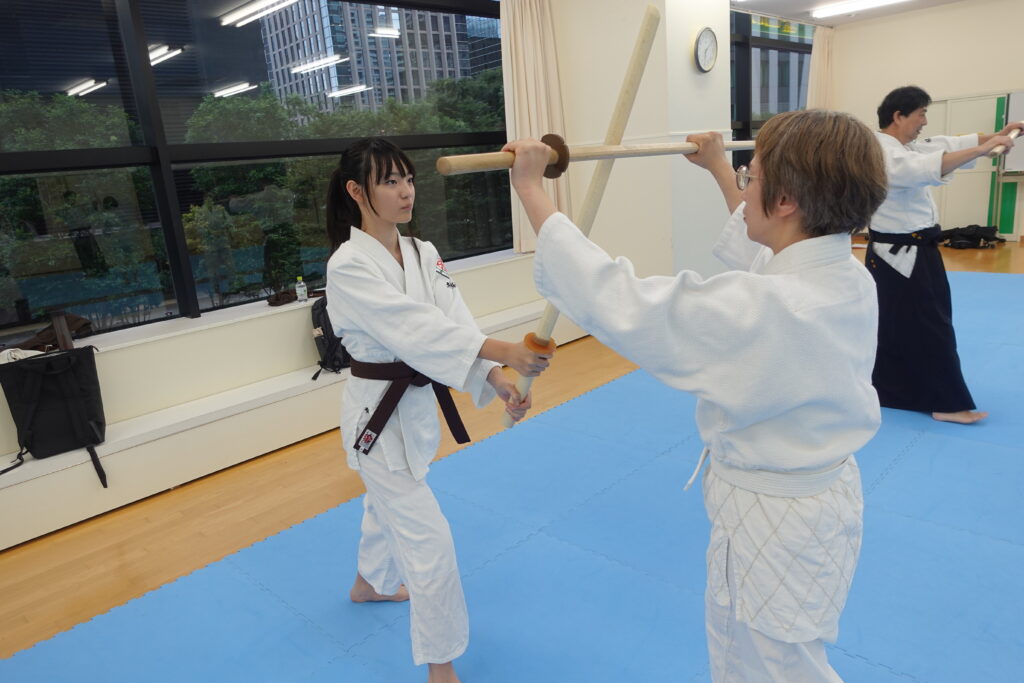
週に1回
Practice once a week
- adlut ¥6000
- child ¥5000
- Parent and Child ¥8000
- Brother ¥8750
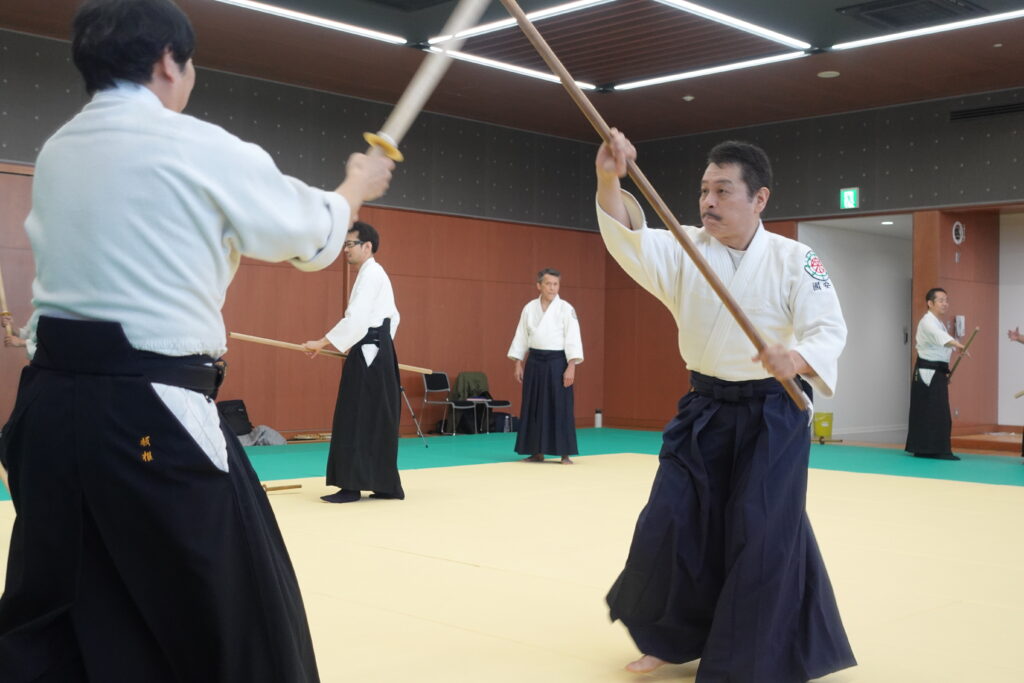
週に2回以上
Practice 2 or more times a week
- +3000 yen per class
A dojo where iaiJutsu is practiced
Chiba
Monday Thursday
Chiba City Headquarters Dojo
【千葉市 中央区 祐光 4-8-3】
月曜日
9:00-11:00 会津伝小野派一刀流剣術・無限神刀流居合術(Aizu Ono-ha Itto-ryu Swordsmanship and Mugen Shinto-ryu Iaido)
木曜日
18:00-19:30 会津伝小野派一刀流剣術・無限神刀流居合術(Aizu Ono-ha Itto-ryu Swordsmanship and Mugen Shinto-ryu Iaido)
Tokyo
土曜日
文京区 茗荷谷
【文京スポーツセンター】
剣術 16:00-17:00(小野派一刀流)Aizu Ono-ha Itto-ryu Swordsmanship and Mugen Shinto-ryu Iaido
居合17:00-18:00(無限神刀流)

